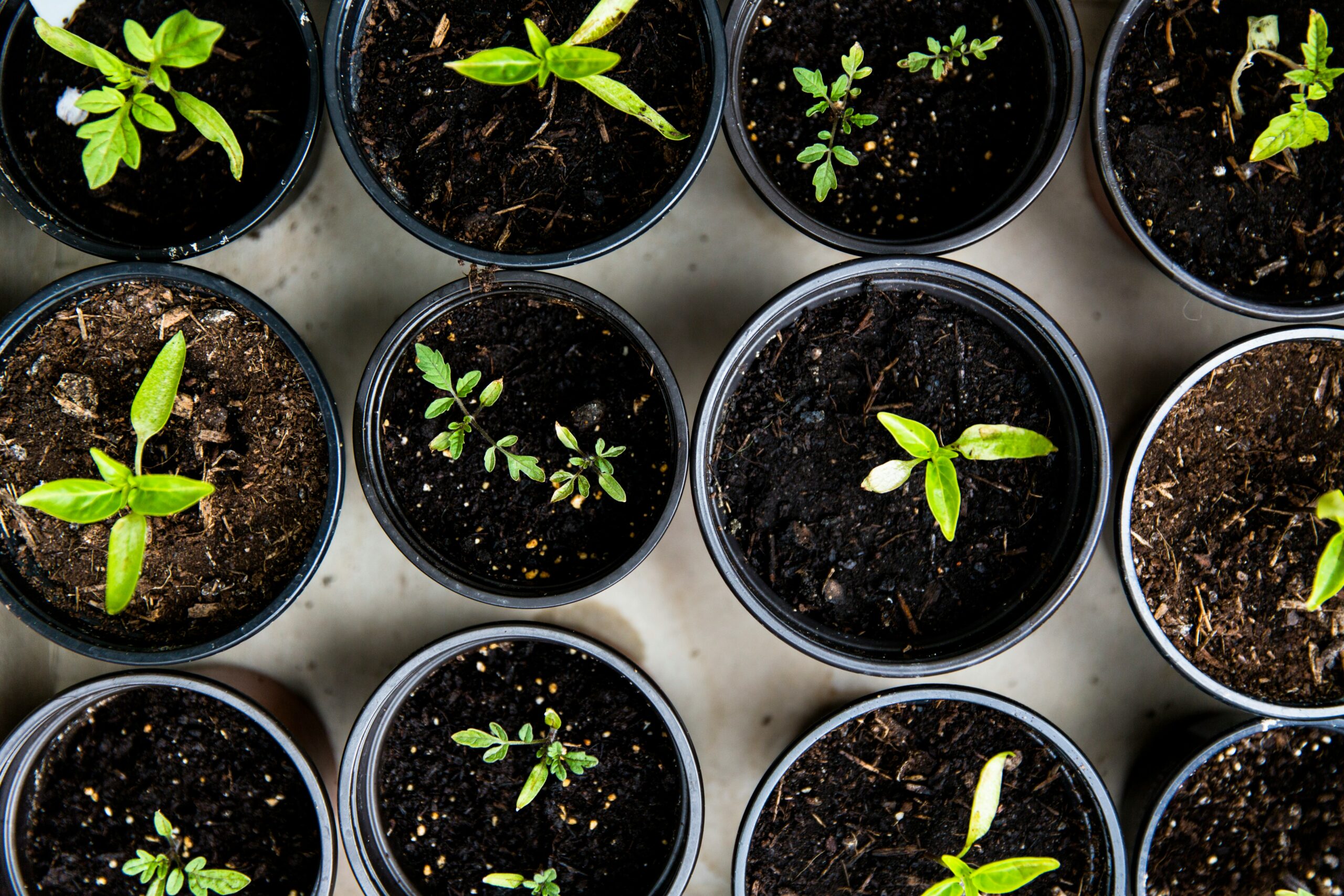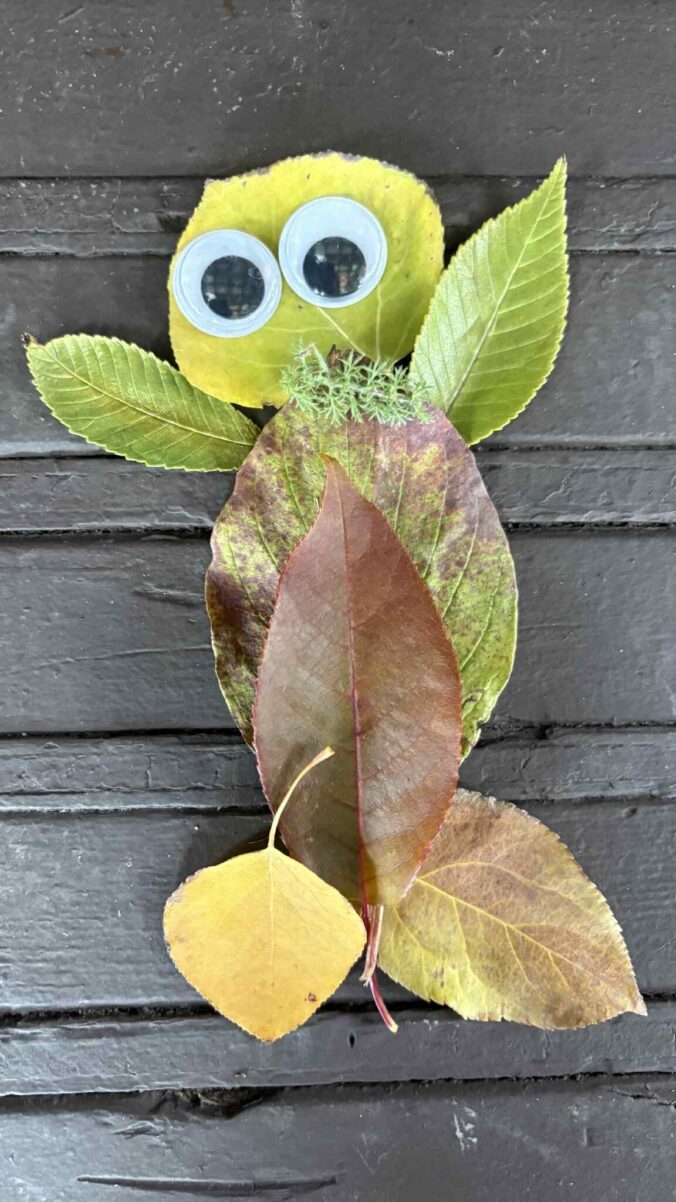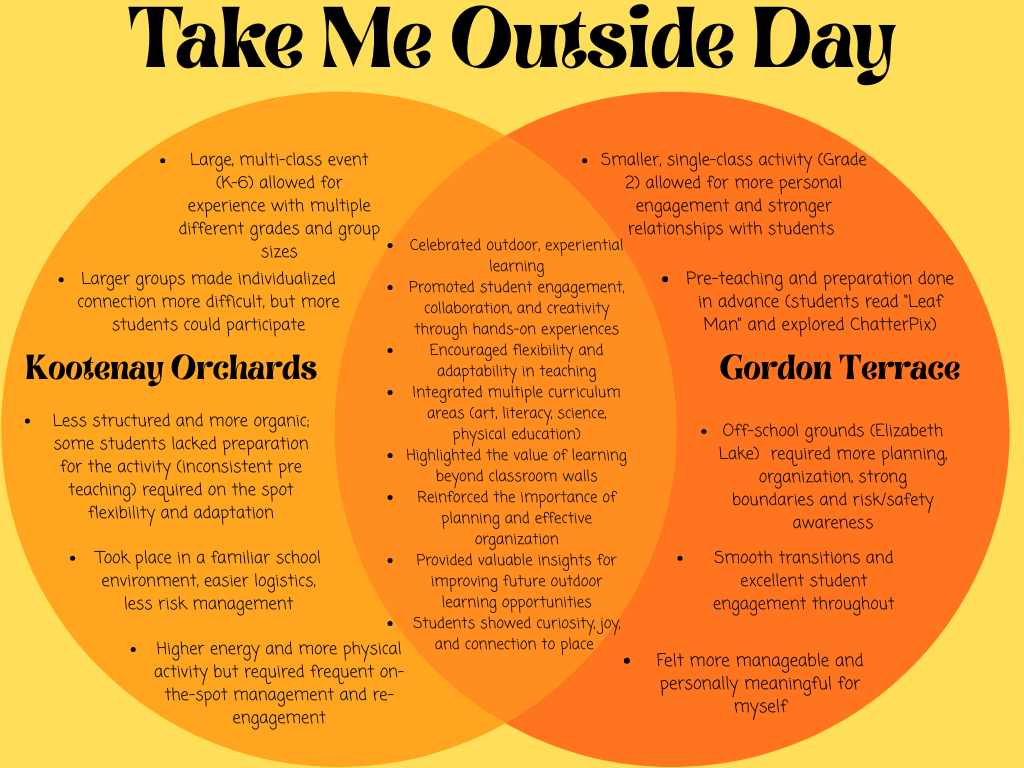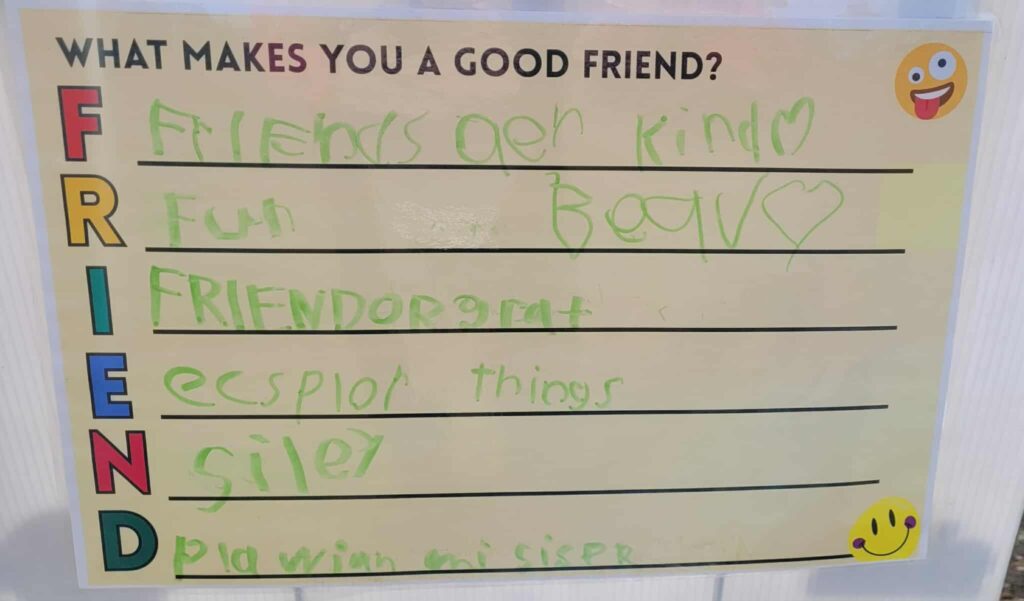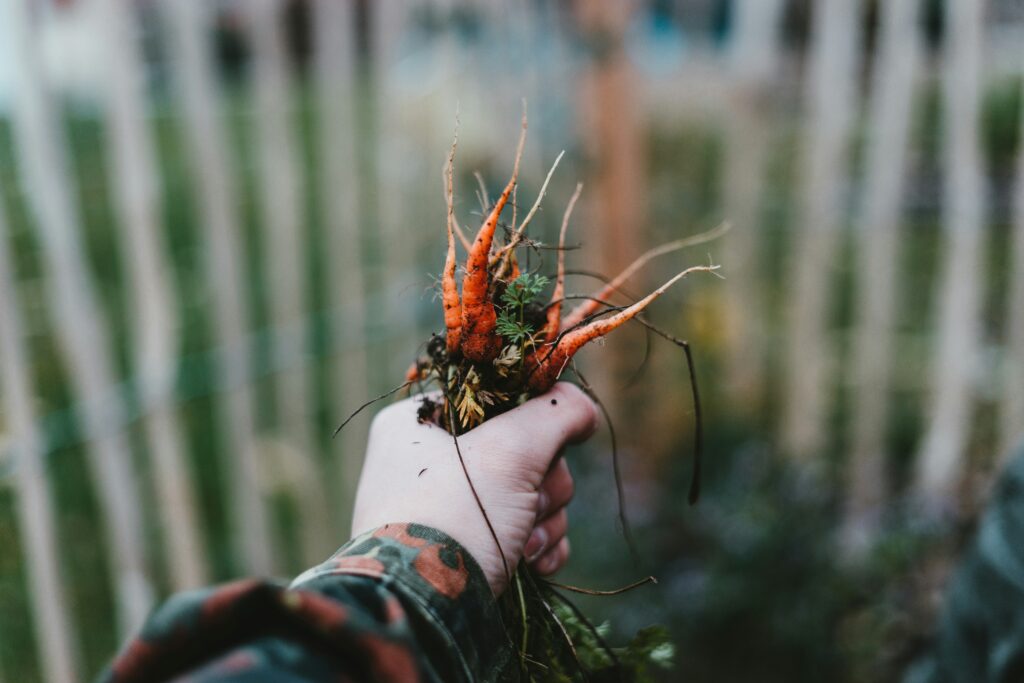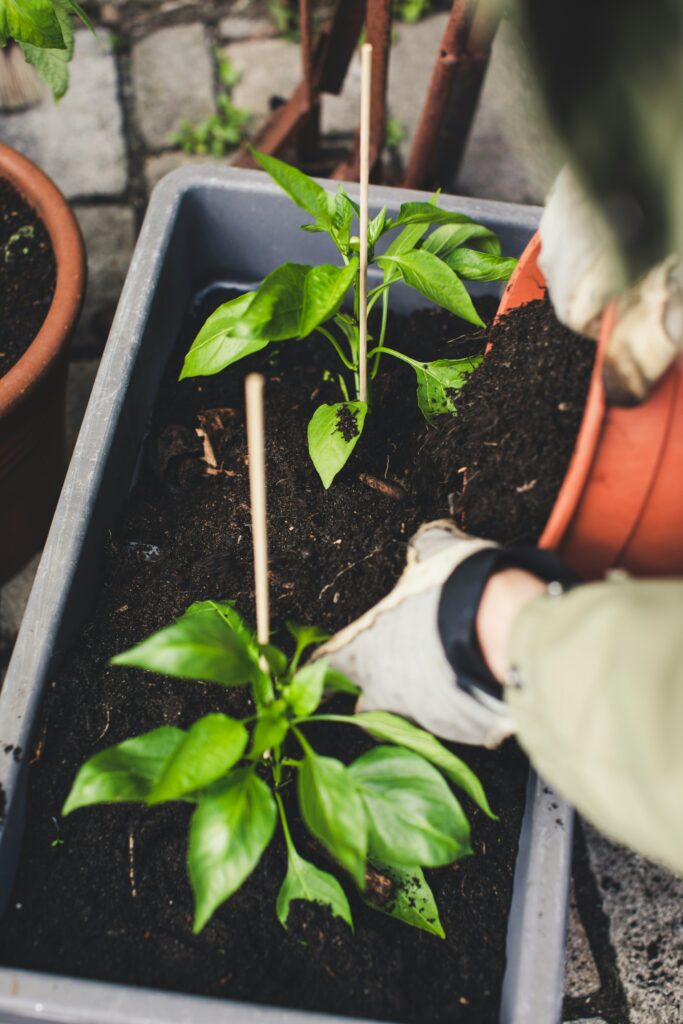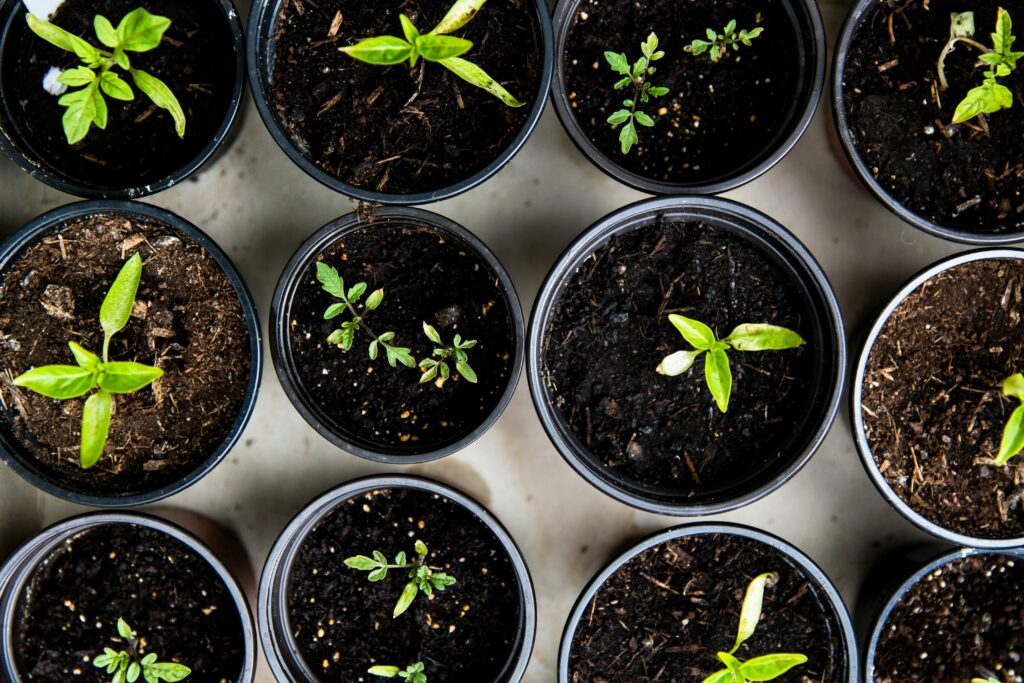Let them eat dirt!
In our increasingly indoor world, it may seem surprising that one of the most powerful learning tools for children might be as simple as a patch of soil, some plants, and a watering can. Yet, the body of research growing around garden-based learning (school or community gardens) suggests that gardening offers children a rich, educational tool. Gardening has proven to provide many social-emotional and physical benefits. In this post I’ll walk through the how and the why gardening helps children learn, what the science says, and highlight how you might apply it in practice whether at home, in your classroom or in a community setting. Let’s dig in!
(Here is a great video expressing the main ideas of this post)
Why gardening is so flippin’ amazing and why every school should have a garden
There are several overlapping theories through which gardening supports children’s learning: cognitive/academic, social-emotional, physical/health, and connection to nature or place-based learning. As an avid (albeit more recent) gardener myself, I can only attest to these benefits and how profoundly gardening has changed my outlook for the better.
Cognitive & academic benefits
One of the strongest themes is that garden-based activities offer real, hands-on learning that ties in with traditional curriculum (science, math, literacy) and gives children a reason to investigate, ask questions, predict and observe outcomes.
Here are a few things I have discovered on this quest: Gardening is
Multi-sensory, embodied learning:
- In a garden, children feel soil, smell freshly watered plants, taste their bounty, and even listen to the world around them. Sensory experiences with soil, plants, animals, weather and include wonder. They can observe growth, measure changes and are encouraged to touch, play and explore. This sensory involvement increases processing and retention vs purely abstract instruction. It gets children asking and thinking “Why do plants need sunlight?”, “What happens if I water too much?”, “How does changes to the soil impact plant growth?”
- You can create so many cross-curricular lessons that extend beyond the classroom and into the garden by simply getting kids in the dirt with some seeds, a little bit of compost, water and sunlight
Inquiry and real world problem solving
- Gardening presents real challenges (watering, pests, variable growth) so children naturally engage as investigators and problem-solvers, which supports critical thinking
- Cross-disciplinary connections: For instance, measuring plant growth involves math, discussing soil and roots involves science, writing or drawing observations involves literacy and art. Garden-based learning builds integrated knowledge from vast knowledge bases
Social-emotional & behavioral learning
Beyond academic bonuses, gardening supports children’s social and emotional development: How? I’ll tell ya!
- Gardening can improve students’ attitudes, self-efficacy and motivation by giving them something to take pride and interest in. Being a part of a school garden can enhance student bonding, teamwork, and provides endless learning opportunities for friendships (some of my dearest friends are the ones who help me weed)
- Garden activities give children responsibility (caring for a plant), patience (waiting for growth) and a sense of accomplishment (harvest). Gardening teaches children patience and perseverance. As they witness the fruits of their labor, the sense of excitement of their participation in helping things grow and the satisfaction of their harvest can make lifelong gardeners, and learners!
- In terms of emotional-well-being, being outdoors and engaging with plants has been known to reduce stress, increase positive feelings, and improve attention, all of which support better learning later on in the classroom. Gardening supports students mind body connection through slowing down and grounding themselves by getting their hands in the dirt, fresh air in their lungs and their feet on the grass
Physical health & nutrition
Gardening naturally intersects health and nutrition, which in itself is linked to better learning outcomes and mental well-being (healthy body = healthy brains):
- Gardening is a workout! It is a full-bodied physical activity, hauling dirt, shoveling compost, weeding, planting, harvesting and even watering are all great forms of physical activity, especially if you are gardening daily
- Mindfulness. Gardening slows your brain down and can be restorative to your mind body balance and support your emotional well-being, plants really can do that!
- Growing your own food and knowing exactly where it came from, what exactly went into it and eating your own homegrown fruits and veg is such a wonderful feeling and fact (well, a Dakota backed fact)
- By growing edible plants, children develop familiarity and positive attitudes toward fresh produce which can boost diet quality and nutrition (eating plants is fun and good for you, who would’ve thought).
Place-based connections & Environmental stewardship
Another important aspect: Garden experiences help children make the connection between the natural world and themselves. Being a part of and aware of where their food comes from can connect them to the bigger picture. Gardening can be used as a tool to learn about food security, food systems, ecosystems, life cycles, natural resources and the vast interconnection between them. Connecting the dots between humans and the ecological processes around them helps us create ecological literacy, curiosity and long-term environmental awareness for students and help them recognize human impacts.
- Garden experiences create a foundation of ecological knowledge, wealth and stewardship skills, enhancing an awareness of the link between plants, animals, climate, ecosystems, and the importance of these for our food systems
- In other words, you know where you grow. Being a steward of even a small garden plot can create a domino effect of change. Great learning can happen from the smallest of seeds
- Research shows that school gardens function as comprehensive learning environments that promote the cognitive, social and emotional development of children. When children engage in observation, drawing, writing and other active processes involving a school or community garden, they form personal connections and relationship to the land, where place-based learning can occur
In the video below, it was found that children who participated in the program even helped parents with making better grocery shop purchases and wanted to help find different fruits and veggies they knew and grew. This in turn allowed them to contribute to the weekly shop and meal planning, building into bigger connections of food relationships and sharing it with their families (whoohoo)
How to make a garden at home, in your classroom or community setting
Given the above information, how can educators or parents practically build garden-based learning opportunities for children, especially if they themselves are not gardeners? Here are some great ideas and suggestions I found:
Start small and hands-on
A small planter box, a set of pots or even container gardening works. And good news? Seeds are relatively cheap! No matter the size of your garden or space available, even in a windowsill garden, children can measure plant growth, observe seeds sprouting, and help grow their own food or herbs. The key is to let them do it: digging soil, planting seeds, watering, weeding, observing insects, setting up compost systems, are all ways kids can actively be involved, learn from experience and discover new things, and above all let them get messy, its way more fun that way (remember to use tasks appropriate for different children’s ages and abilities).
Incorporate measurement, observation & documentation
Have children journal or draw what they see; measure height of plants; count leaves; compare leaf sizes; explore variables (sun/shade, water/compost amounts). These activities tie into math (measurement, graphing, counting), science (life-cycles, plant biology, experimentation), literacy (vocabulary, journaling).
Encourage inquiry, questioning & reflection
Instead of only telling children about life cycles, ask them: What do you think will happen if we water less? What do you notice about the soil? Who do you think ate this plant? Do plants like sunshine? How much or for how long?
Discussion and reflection can reinforce deeper learning (metacognition) and build curiosity for exploration. Experimentation is the basis of gardening. Learning what grows best where, and with what is all part of the learning process, and it encourages lots of questions. Questions are a great opportunity to involve community gardening clubs, family members, seniors or local farmers to come and talk about their favorite ways to grow things and answer any questions the students may have.
A garden is a place where people can gather:
Gardening together naturally creates peer communication and cooperation. By sharing tools, deciding what to plant and where to plant, students learn how to build social-emotional skills as well as learning how to collaborate. Taking turns planning or weeding the garden plot, deciding what should be planted and where, what types of seeds to sow and who will water on what days, and sharing the task of harvesting all contribute to building a child’s sense of shared responsibility and camaraderie. Children develop responsibility when caring for plants over time: watering schedule, weeding, and harvesting all teach time-management, accountability, commitment and patience (extra heavy dose on the patience). School gardens operate as a collective whole, where everyone can contribute to growth, many small tasks help create one big beautiful garden.
Harvest time, sharing meals and connection to food
Let children eat and taste the vegetables or fruits they grow. This connects the abstract idea of food (from factory or store) back to nature, enhancing both nutrition awareness and a sense of reward. Children can have improved recognition and willingness to taste vegetables if they themselves have grown it (I always end up snacking on fresh veggies and fruits when I’m in the garden, guilty as charged). Gardening is a great way to incorporate learning about seasonal produce, recipes, local food sources and discover new fruits and vegetables to try. Cooking and sharing the food harvested from a school garden or community garden makes room for a much bigger impact on community food security, or school food security. Providing or supplementing food programs with school grown produce allows for a full circle moment from seed to table to community. It is a great opportunity to bring in families for a harvest dinner, grandparents for a class canning lesson, teaching how to process excess food for winter, sharing family recipes or meals, local gardening tips and on and on. All of these ideas come together to share the joy of gardening with others.
Make it part of curriculum or routine
Whether in a classroom or at home, regular time in the garden (even 15-20 minutes/week) helps transform it from a “fun side activity” to a meaningful learning environment. From all of the research I’ve done the biggest take away is this: Kids want to be in the garden. It is a marvelous resource to extend learning from classroom to soil. According to Cornell, consistent time spent in the garden led to the integration of broader educational goals. Rather than one-off activities, spending regular consistent time in the garden can help improve learning outcomes and increase learning connections (the secret is in the soil) Let them try their own hand at building their own free inquiry project, based around the school garden.
Why gardening matters (and a few limitations)
Why it matters:
In many educational settings the move has been toward screen-based, indoor learning. Gardening provides a counterpoint: outdoor, physical, real-world, multi-sensorial learning. It reaches children who may favor hands-on and experiential learning, teaches better health, builds eco-literacy, and can lead to improved academic connections and socio-emotional development. In short, gardening is awesome and helps kids grow, literally and emotionally.
Cautions & considerations:
- Implementation matters: simply having a garden may not be enough; the instructional design, teacher/parent involvement and integration into learning matter. It takes a lot of time and commitment to make a garden grow which can be found restraining for our very busy teachers and parents
- Resources and support (tools, access to land/soil, watering) may be limited in some contexts. Research notes social barriers to implementation and suggests strategies for overcoming them
So, what does this all mean?
All together science and educational research points strongly toward gardening being far more than just another outdoor activity for children. It is a meaningful learning environment that spans cognitive, social, emotional and physical health development. By engaging children in all of the goodness of gardening, we tap into students’ curiosity, inquiry, responsibility and connection. Whether you’re a parent, teacher, or community organizer, creating a garden-based learning space can be a powerful tool for helping children learn, thrive and develop a lifelong relationship with the land they live on. Personally, I can attest to all of this, as gardening has been one of the most profound learning mentors in my life. And nothing brings me more joy than to declare, I grew this! Look at this sunflower! This whole meal came from my garden, enjoy this homemade jam from my raspberry and strawberry patch, please take as much kale and basil as you physically can I have simply grown too much! So, this is your sign to let them eat dirt (kidding, mostly) Tune in next time for an in-depth post on seed starting and seed saving with children.
Video & further resources/articles used
- Video: Great Gardening: Learning to Grow (PBS) focuses on children of all ages learning life-skills through gardening at school. https://www.pbs.org/video/learning-to-grow-rglg1f/
- PBS Kids article
- https://www.pbs.org/parents/thrive/gardening-with-kids-how-it-affects-your-childs-brain-body-and-soul
- For deeper research: the Cornell “Key Findings” page on garden-based learning. https://gardening.cals.cornell.edu/
- This is an excellent website for resources and research: https://www.childrenandnature.org/
- For research summary: Children & Nature Network’s “Research Digest: Gardening”. https://www.childrenandnature.org/resources/research-digest-gardening-with-and-for-children/
